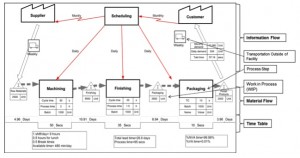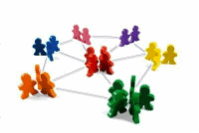The Forest Products Industry has made a concerted effort to reduce operating expenses in order to stay competitive in the global marketplace. Manufacturers have applied lean thinking and energy management programs to help them identify and address inefficiencies but the systems work independent of each other which diminishes their overall value and benefit. Developing a methodology that applies lean thinking to correlate energy consumption with throughput would provide a valuable resource for the industry.

Lean thinking is a process improvement that focuses on increasing value-added processes and decreasing non-value-added processes (Womack and Jones, 2003). Value is determined by the customer (Womack and Jones, 2003). Eliminating or reducing non-value-added processes can increase production rates for value-added-processes (Liker, 2003). By eliminating or reducing non-value-added processes, energy efficiency is improved.
After a company has bought into the concept of becoming “lean” they must first identify both value added and non-value added steps within a process. However, identifying value added contribution of various process steps is difficult to do without seeing the entire process. Value stream mapping (VSM) is a way of showing how material/products and information flow through the entire production process (Rother and Shook, 2003). When taking a value stream approach it is important to focus on the big picture and not just individual processes. Rother and Shook (2003) state that “a value stream is all the actions (both value added and non-value added) currently required to bring a product through the main flows essential to every product.” When mapping out the current process it is generally recommended to start the map beginning with the customer and then mapping subsequent upstream processes to the supplier or raw materials. In doing so, it allows production to view the process from the customers view point thus, allowing the customer to determine value and non-value added processes.

